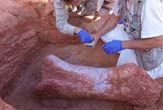
© Joe Cornish/GETTY10, 9, 8, 7, 6, 5, 4, 3, 2, 1, and 1 again, happy new year!
At midnight on New Year's Eve, time will stop momentarily. Guardians of atomic clocks around the world will add an extra "leap second" to 2008 to keep time synched with the Earth's rotation. Arguably, the rise of GPS makes this tweak unnecessary.
In 1972, global commerce began to set its clocks by Coordinated Universal Time (UTC), based on the oscillations of the caesium atom. The snag was that other things, such as shipping and aircraft navigation, still relied on UT1 time, which divides one rotation of the Earth into 86,400 seconds. But the Earth's spin is slowing, so the two systems gradually go out of synch. "Over the course of a millennium, the differences would accumulate to about an hour," says Robert Nelson of the Satellite Engineering Research Corporation in Bethesda, Maryland.
To compensate, the ITU, or International Telecommunications Union, adds a leap second to atomic time every few years. However, many argue that we should stop tinkering with time, not least because of the glitches it causes (see "Add second...").
Now a group within the ITU, called Working Party 7A - after deliberating over the leap second for years - has told New Scientist that it recommends abolishing the leap second. Group member Elisa Felicitas Arias, of the International Bureau of Weights and Measures in Paris, France, argues that a timescale that doesn't need regular tweaking is essential in an increasingly interconnected world. What's more, she says, ships and aircraft now navigate via GPS rather than the old time system. GPS runs on a version of atomic time.

